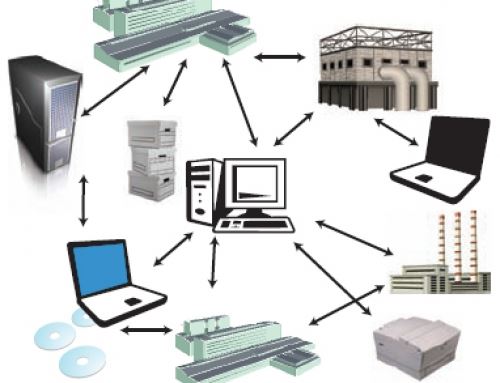Disadvantages Of Serial Processing Operating System
Operating systems are there from the very first computer generation and they keep evolving with time. In this chapter, we will discuss some of the important types of operating systems which are most commonly used. Batch operating system The users of a batch operating system do not interact with the computer directly. Each user prepares his job on an off-line device like punch cards and submits it to the computer operator. To speed up processing, jobs with similar needs are batched together and run as a group. The programmers leave their programs with the operator and the operator then sorts the programs with similar requirements into batches.

Operating system missing – Solved. Difference between serial and parallel processing. Z on Advantages and disadvantages of time sharing operating system. Sep 1, 2018 - A multiprocessing operating system is capable of running many programs. Multiprocessing Systems. Or online transaction processing.
The problems with Batch Systems are as follows − • Lack of interaction between the user and the job. • CPU is often idle, because the speed of the mechanical I/O devices is slower than the CPU. • Difficult to provide the desired priority.
Time-sharing operating systems Time-sharing is a technique which enables many people, located at various terminals, to use a particular computer system at the same time. Time-sharing or multitasking is a logical extension of multiprogramming.
Processor's time which is shared among multiple users simultaneously is termed as time-sharing. The main difference between Multiprogrammed Batch Systems and Time-Sharing Systems is that in case of Multiprogrammed batch systems, the objective is to maximize processor use, whereas in Time-Sharing Systems, the objective is to minimize response time. Multiple jobs are executed by the CPU by switching between them, but the switches occur so frequently. Thus, the user can receive an immediate response. For example, in a transaction processing, the processor executes each user program in a short burst or quantum of computation. That is, if n users are present, then each user can get a time quantum.
When the user submits the command, the response time is in few seconds at most. The operating system uses CPU scheduling and multiprogramming to provide each user with a small portion of a time.
Computer systems that were designed primarily as batch systems have been modified to time-sharing systems. Advantages of Timesharing operating systems are as follows − • Provides the advantage of quick response. • Avoids duplication of software. • Reduces CPU idle time. Disadvantages of Time-sharing operating systems are as follows − • Problem of reliability. • Question of security and integrity of user programs and data.
• Problem of data communication. Distributed operating System Distributed systems use multiple central processors to serve multiple real-time applications and multiple users.
Data processing jobs are distributed among the processors accordingly. The processors communicate with one another through various communication lines (such as high-speed buses or telephone lines). These are referred as loosely coupled systems or distributed systems. Processors in a distributed system may vary in size and function. These processors are referred as sites, nodes, computers, and so on.
Rosia yongu (Russian Studies), vol. Raschet induktivnosti drosselya na ferritovom koljce. Holdings of rare photographs and plate books at the Slavic and Baltic Division of The New York Public Library.'
The advantages of distributed systems are as follows − • With resource sharing facility, a user at one site may be able to use the resources available at another. • Speedup the exchange of data with one another via electronic mail.
• If one site fails in a distributed system, the remaining sites can potentially continue operating. • Better service to the customers. • Reduction of the load on the host computer. • Reduction of delays in data processing. Network operating System A Network Operating System runs on a server and provides the server the capability to manage data, users, groups, security, applications, and other networking functions. The primary purpose of the network operating system is to allow shared file and printer access among multiple computers in a network, typically a local area network (LAN), a private network or to other networks.

Examples of network operating systems include Microsoft Windows Server 2003, Microsoft Windows Server 2008, UNIX, Linux, Mac OS X, Novell NetWare, and BSD. The advantages of network operating systems are as follows − • Centralized servers are highly stable. • Security is server managed. • Upgrades to new technologies and hardware can be easily integrated into the system. • Remote access to servers is possible from different locations and types of systems. The disadvantages of network operating systems are as follows − • High cost of buying and running a server. • Dependency on a central location for most operations.
Space robotics pdf. • Space Robot-Challenges in Design and Testing • System Verification and Testing • Structure of Space Robots • Operation • Conclusion • Reference Here we are giving you Space Robotics Seminar and PPT with PDF report. • Space Shuttle Robot Arm Use • Survey the outside of the Space Shuttle • Transport an EVA crew member at the end of the arm • Satellite deployment and retrieval • Construction of International Space Station Content of the Seminar and pdf report for Space Robotics • Introduction • What is Space Robotics?